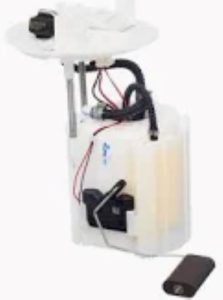The fuel pump relay helps control the heavier power load that comes from supplying electricity to a fuel pump, making sure it receives enough voltage in order for ideal operation. The fuel pump operates with a continuous supply of 12 volts in most cases, and the relay acts as the gate — providing this power when you turn on your ignition. The relay only draws battery power for the fuel pump when necessary to run it, reducing unnecessary use of the pump that causes early wear and tear miracles warranty without proper cooling.
In order to start the engine, we need a good fuel pump relay. As soon as power is supplied to the relay because you have turned on your ignition key, it activates and releases pressure for a few seconds from the fuel pump so that pressurize system could first pressurise. The pump may be de-energized and unable to receive power due to a failed relay, resulting in the engine turning over but failing to start. Naturally, a cure for the fuel delivery blues could lie within the likely source -- according to what ASE (National Institute for Automotive Service Excellence) has reported over nearly 15% of no start circumstances in vehicles cascaded from relay or electrical issues involving their fuel system.

This is a critical part, without it many street/strip cars and trucks or performance vehicles with engine swaps will be stuck in the garage$key-p $key-s $. As the pumps move up to being above 300 liters per hour, it becomes necessary for higher-rated relays in order to handle a significantly increased electrical load. A weak relay can cause voltage drops to the point that even these high-volume pumps become capacity challenged by at least 10-percent of their full-flow potential which will hinder your quality arrow foot and deliver if power output is not delivered. Car manufacturers, such as Bosch and AEM diodes provide an optimal design for their relays according to the characteristics of a specific product line; consistency in operation is maintained even at maximum allowable load levels.
In many places where temperatures get to both extremes, relays often dont live very long either from corrosion or overheating. At an average cost of $20 to 50, the worn relay is a very cheap and inexpensive component compared to prematurely failing fuel pump that costs between $300-500. Autotrader and MotorTrend are among the many practitioners to cite regularly checking fuel pump relays for older cars as routine preventive maintenance.
To summarize, a fuel pump relay controls and protects the strength of flow to the Fuel Pump, leading-back on better efficiency yet improved safety. In handling voltage and regulating constant fuel pressure, this relay is essential to proper operation of an engine; therefore it should be considered a vital part in any car's fuel system.